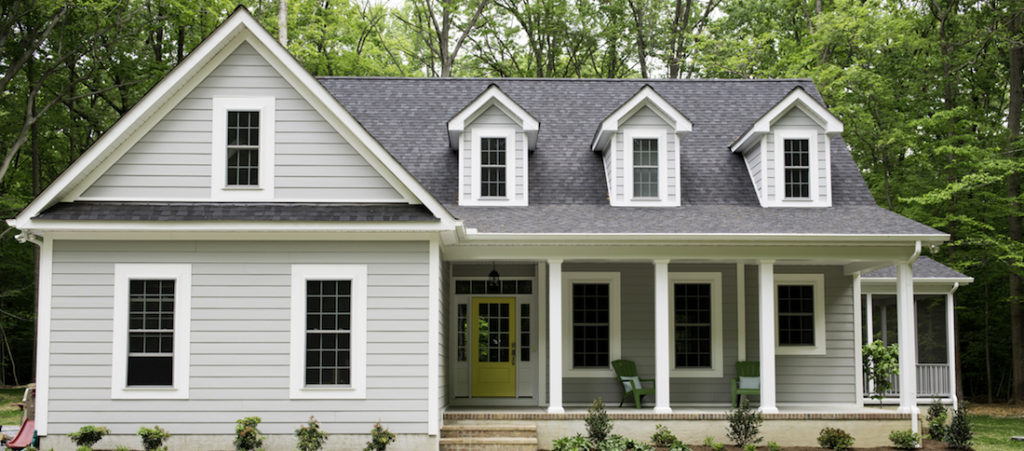
Garage Door Replacement: 112% Value
Replacing your garage door is one of the few home improvements that can actually exceed the cost of investment. Since it is also one of the most affordable projects, it easily tops the list of best home improvements to increase value in 2019.
A new garage door improves your home in several areas that are important to buyers in Michigan. With especially cold winters, homebuyers are conscious of heating costs, and aware that a cold attached garage can quickly sap heat from the home. A new garage door helps to reduce drafts, and ultimately reduce heating costs.
The garage door is also a visual focal point of your home. This large, flat surface makes up a notable part of your home’s exterior facade, and scratches, dents, or other issues can quickly detract from the home’s appearance. On the other hand, a new garage door can elevate the exterior.
Finally, security is a concern for every homeowner. If a garage door doesn’t close or lock properly—or it appears not too—homeowners won’t see it as safe. Even if an older garage door functions properly, homebuyers might still find it suspect. A new garage door puts these concerns to rest.
Manufactured Stone Veneer: 111% Value
This home improvement can significantly elevate the look of your home, and isn’t as expensive as many might think. A manufactured stone veneer is also the only other investment that will actually make you money when you sell.
Manufactured stone veneer refers to partial faux stone siding around the home’s street-facing exterior. The stone segment covers the lower third of the home and an entry archway where possible. Ideally, the manufactured stone complements the colors of the roof, siding, and other exterior elements.
This is one of the best home improvements to increase value because of its dramatic effect on the appearance of the home. The stone veneer sets the home apart from other homes with common vinyl siding. It also gives the home a regal, distinguished appearance, which accounts for the notable increase in value. Stone veneer also has other, functional benefits, like additional water resistance and heat retention.
When considering stone veneer as a home improvement to increase value, manufactured stone presents significantly more benefits than natural stone. Manufactured stone is lighter, easier to work with, and it is much more affordable than natural stone.
Entry Door Replacement: 80% Value
This is the most affordable home improvement on the list, and one with the highest value.
Like the garage door, replacing the entry door of your home has considerable effects on the appearance, heat retention, and security of your home. A durable entry door, like the recommended 20-gauge steel unit, will be the most valuable replacement. This type of door is long-lasting and difficult to break through, especially when combined with a deadbolt lock, giving home buyers peace of mind.
To achieve the maximum aesthetic impact, choose a door that complements the rest of the exterior, and include a half glass panel for a look of elegance and charm.
Grand Entrance: 77% Value
When considering changes to your home’s exterior, particularly the entry door, you might also consider a grand entrance. This is another elegant home additional that can considerably change your home’s exterior. A grand entrance, along with manufactured stone veneer, can take your home from average to spectacular.
A grand entrance widens the door frame slightly, but leaves the actual door size the same. The additional space includes sidelights with tasteful glass panels to frame the door itself. A grand entrance makes an immediate and striking first-impression, setting the stage for the home from the first steps visitors take inside.
Besides the high ROI, a grand entrance makes the list of best home improvements to increase value because of its comparatively low cost and quick timeline. Experienced contractors can add a grand entrance in one day’s time. If you are considering replacing your entry door anyway, taking on both of these projects at once can net you substantial value.
Siding Replacement: 73% Value
Most homeowners know the value of clean, neat siding, but they don’t know the actual number figure behind it. Replacing worn-out side can win you back about 73% of your investment. Of course, this partially depends on how worn-out the siding is.
If you’ve lived in your home for several years, you probably don’t notice cracks, stains, or faded spots on your siding. However, homebuyers will. In some cases where the damage and wear around the siding is minimal, a new coat of paint may be enough. But, if the siding shows structural damage, like cracks, chips, or holes, if mold or rot has set in, or if has begun to warp, new siding will be the better investment.
Before deciding which home improvements are best for your home, decide how long you will continue to live in your home. If you plan on staying several more years, you’ll get enjoyment out of larger improvements, like siding replacement or a grand entrance, as well as additional value. If you want to sell in the next two years, start with the most affordable home improvements, like a new garage door or entry door. If you plan these renovations carefully, you can time them around the best times to buy and sell a home. Remember to start with the most affordable improvements, like a new coat of paint and a deep clean, and make a home improvement budget to stay on track.
Source: © 2019 Hanley Wood Media Inc. Complete data from the Remodeling 2019 Cost vs. Value Report can be downloaded free at www.costvsvalue.com
